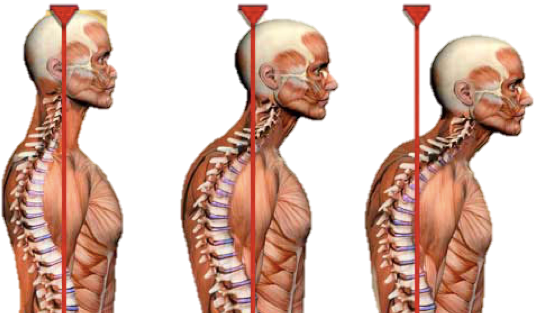What Is Turtle Neck Syndrome: Causes, Symptoms, and Treatment
Picture this: you’re reading an exciting article on your phone, engrossed in the latest news or scrolling through social media. Suddenly, you feel a twinge in your neck, a nagging ache that just won’t go away. Welcome to the world of Turtle Neck Syndrome – a modern-day affliction caused by our constant connection to screens and technology. In this blog post, we’ll dive deep into what Turtle Neck Syndrome is all about, explore its causes and symptoms, and uncover effective treatment and prevention strategies to keep your neck healthy and happy. So sit back (with good posture!) and let’s unravel the mystery of Turtle Neck Syndrome together!
What is Turtle Neck Syndrome and Text Neck?
Turtle Neck Syndrome, also known as Text Neck, is a modern-day musculoskeletal condition that affects the neck and upper back. It is characterized by pain, stiffness, and strain in the muscles of these areas due to prolonged screen time and poor posture.
Text Neck specifically refers to the neck pain caused by looking down at electronic devices for extended periods. The repetitive forward head position puts added pressure on the cervical spine, leading to discomfort and potential long-term issues.
Both Turtle Neck Syndrome and Text Neck are becoming increasingly common as technology continues to play a significant role in our daily lives. From smartphones to laptops, we spend hours hunched over screens without realizing the toll it takes on our bodies.
Understanding these conditions is crucial for maintaining good neck health and preventing further complications down the line. By being mindful of our posture and taking regular breaks from screens, we can protect ourselves from the pitfalls of Turtle Neck Syndrome.
Neck muscle injury at birth
Neck muscle injury at birth is a lesser-known yet significant factor contributing to Turtle Neck Syndrome. When babies experience trauma during the birthing process, it can result in long-term issues affecting their neck muscles. The delicate nature of newborns makes them susceptible to injuries that may manifest later in life.
These early injuries can lead to abnormalities in muscle development and function, setting the stage for neck problems down the road. It’s essential for parents and healthcare providers to be aware of these potential consequences and take preventive measures when possible.
If left unaddressed, neck muscle injuries from birth could exacerbate over time, causing discomfort and limitations in movement as the child grows older. Seeking early intervention through physical therapy or specialized treatments can help mitigate the impact of these initial traumas on neck health.
Sleeping in an awkward position
Have you ever woken up with a stiff neck, wondering how you managed to sleep in such an awkward position? It’s not uncommon for our bodies to contort during the night, leading to discomfort and potential issues like Turtle Neck Syndrome.
Sleeping in an awkward position can put strain on your neck muscles and lead to stiffness and soreness. When your head is positioned at an unnatural angle for hours on end, it can cause muscle imbalances and contribute to neck pain.
To prevent this, try using a supportive pillow that keeps your neck aligned with your spine while you sleep. Avoid sleeping on your stomach as it can force your neck into a twisted position.
If you find yourself waking up with neck pain frequently, consider discussing your sleeping habits with a healthcare professional. Making small adjustments could make a big difference in alleviating discomfort caused by sleeping in awkward positions.
Neck muscle spasm
Neck muscle spasms, also known as cervical dystonia, can be a painful and disruptive condition affecting the muscles in the neck. These spasms are involuntary contractions that can cause the neck to twist or turn into uncomfortable positions. This can lead to stiffness, restricted movement, and discomfort.
The exact cause of neck muscle spasms is not always clear, but factors such as stress, poor posture, repetitive movements, or underlying medical conditions may contribute to their development. Symptoms of this condition can vary from mild discomfort to severe pain and difficulty with daily activities.
Treatment for neck muscle spasm typically involves a combination of therapies such as physical therapy, medication, botulinum toxin injections (Botox), and in some cases surgery. It’s essential to consult with a healthcare professional for an accurate diagnosis and individualized treatment plan tailored to your specific needs.
Stiffness
Do you ever wake up in the morning feeling like your neck is as stiff as a board? That uncomfortable sensation of tightness and limited range of motion can be attributed to stiffness in the neck muscles.
Stiffness often results from prolonged poor posture, muscle strain, or even stress. When we spend hours hunched over our desks or staring down at our phones, it’s no wonder that our necks rebel with stiffness.
Ignoring this stiffness can lead to further discomfort and potential complications. It’s essential to address it promptly before it becomes a chronic issue.
Stretching exercises, proper ergonomics, and regular breaks from screen time can help alleviate neck stiffness. Taking care of your posture and incorporating relaxation techniques into your daily routine can also prevent stiffness from recurring.
Listen to your body when it signals discomfort – don’t let neck stiffness cramp your style!
Headaches
Do you often find yourself grappling with persistent headaches that just won’t seem to go away? If so, these could be potential symptoms of Turtle Neck Syndrome.
Headaches are a common complaint among individuals suffering from neck issues, as the muscles in the neck can become strained and tense, leading to discomfort that radiates up into the head. The tension in these muscles can trigger headaches ranging from mild to severe.
These headaches may manifest as dull aches or sharp pains at the base of your skull or behind your eyes. They can also cause sensitivity to light and sound, further adding to your discomfort.
It’s essential not to ignore these warning signs that your body is sending you. Seeking proper treatment and addressing the root causes of Turtle Neck Syndrome can help alleviate these debilitating headaches and improve your overall quality of life.
Muscular Weakness
Muscular weakness in the neck area can be a significant factor contributing to Turtle Neck Syndrome. When the muscles in the neck are weak, they may not adequately support the head, leading to strain and discomfort. This can result from poor posture, lack of exercise, or even prolonged periods of immobility.
Weak neck muscles can also affect overall stability and range of motion in the neck region. This may lead to difficulties in performing daily activities such as turning your head or maintaining proper alignment while sitting or standing. Additionally, muscular weakness could exacerbate existing symptoms like stiffness and headaches.
To address muscular weakness associated with Turtle Neck Syndrome, targeted exercises focusing on strengthening the neck muscles can be beneficial. Physical therapy sessions tailored to improve muscle tone and flexibility may also help alleviate symptoms over time.
It’s essential to consult with a healthcare professional before starting any new exercise regimen to ensure that it is safe and appropriate for your specific condition. By addressing muscular weakness proactively, individuals experiencing Turtle Neck Syndrome may find relief and improved mobility in their daily lives.
The Impact of Prolonged Screen Time on Neck Health
In today’s digital age, our reliance on screens has skyrocketed, leading to a surge in neck-related issues. Prolonged screen time can take a toll on our neck health, causing strain and discomfort. The constant downward gaze while using devices like smartphones and laptops contributes to the development of turtle neck syndrome.
When we spend hours scrolling through social media feeds or binge-watching shows, we often neglect our posture, unknowingly putting pressure on our neck muscles. This prolonged stress can lead to stiffness and pain in the neck area over time.
Moreover, the blue light emitted from screens can disrupt our sleep patterns, further exacerbating any existing neck problems. It’s crucial to take regular breaks, practice proper ergonomics, and incorporate stretches into your daily routine to alleviate the strain caused by excessive screen time.
By being mindful of how much time we spend glued to screens and making conscious efforts to prioritize our neck health, we can mitigate the negative effects associated with prolonged screen exposure.
Neurological and Musculoskeletal Implications
The neurological and musculoskeletal implications of Turtle Neck Syndrome can have a significant impact on overall health. When the neck muscles are strained or injured, it can lead to nerve compression, causing tingling sensations or numbness in the arms and hands. This condition may also contribute to poor posture, leading to spinal misalignments that affect the entire body’s alignment.
Furthermore, prolonged strain on the neck muscles can result in decreased range of motion and mobility, making everyday activities more challenging. Over time, untreated Turtle Neck Syndrome may exacerbate into chronic pain conditions that require extensive rehabilitation efforts to manage effectively.
It is crucial to address these implications promptly through proper treatment strategies such as physical therapy, massage therapy, and ergonomic adjustments. By prioritizing neck health and adopting preventive measures like regular breaks from screen time and maintaining good posture habits, individuals can mitigate the risk of developing severe neurological and musculoskeletal complications associated with Turtle Neck Syndrome.
The Emergence of Text Neck Among Smartphone Users
Have you ever found yourself hunched over your smartphone for extended periods, scrolling through social media feeds or texting away? If so, you may be at risk of developing a modern-day ailment known as Text Neck. This condition is becoming increasingly prevalent due to the widespread use of smartphones and tablets in our daily lives.
Text Neck occurs when the neck is strained from constantly looking down at a screen, leading to discomfort, stiffness, and potential long-term damage. The repetitive stress on the neck muscles and spine can cause misalignment and structural issues over time.
With more people relying on digital devices for work, communication, and entertainment, it’s crucial to be mindful of our posture to prevent Text Neck. Simple adjustments like holding devices at eye level and taking frequent breaks can help alleviate strain on the neck muscles.
As technology continues to advance and play a central role in our lives, it’s essential to prioritize proper ergonomics and postural habits to safeguard our neck health from the perils of Text Neck.
Causes and Symptoms of Turtle Neck Syndrome
Turtle Neck Syndrome can stem from a variety of causes, including neck muscle injury at birth. This early trauma may lead to long-term issues if left unaddressed. Another common trigger is sleeping in an awkward position, putting strain on the delicate muscles and ligaments in your neck.
Neck muscle spasms are a prevalent symptom of this syndrome, causing discomfort and limited range of motion. Stiffness in the neck area is also a key indicator, making it challenging to turn your head without experiencing pain. Headaches often accompany these symptoms, contributing to overall discomfort.
Muscular weakness may develop over time due to the continuous strain on the neck muscles. It’s essential to recognize these signs early on and seek appropriate treatment to prevent further complications down the road. Understanding the causes and symptoms of Turtle Neck Syndrome is crucial for effectively managing this condition.
Treatment and Prevention Strategies
When it comes to treating and preventing Turtle Neck Syndrome, a multifaceted approach is key. One of the primary strategies is physical therapy, which aims to strengthen the neck muscles and improve flexibility. Techniques like massage therapy and chiropractic adjustments can also provide relief by addressing muscle tension and alignment issues.
In addition to hands-on treatments, incorporating ergonomic changes into your daily routine can make a significant difference. This includes adjusting your workstation setup, using a supportive pillow while sleeping, and taking frequent breaks from prolonged screen time to stretch your neck muscles.
Regular exercise that focuses on improving posture and strengthening the core muscles can help prevent Turtle Neck Syndrome from developing or worsening. Mindfulness practices such as yoga or meditation may also be beneficial in reducing stress levels that contribute to muscle tension in the neck.
Remember, prevention is always better than cure when it comes to neck health. By being proactive about implementing these strategies into your lifestyle, you can effectively manage Turtle Neck Syndrome and promote long-term wellness.
Conclusion
It is crucial to be mindful of our posture and neck health in this digital age where prolonged screen time has become the norm. Turtle Neck Syndrome, also known as Text Neck, can have serious implications on both neurological and musculoskeletal health if left untreated. By understanding the causes and symptoms of this condition, individuals can take proactive steps to prevent it from occurring.
Implementing simple strategies such as adjusting screen height, taking regular breaks, practicing good posture, and incorporating neck exercises into daily routines can help alleviate symptoms and prevent Turtle Neck Syndrome from progressing. Remember, a healthy neck leads to a healthier overall well-being. So let’s all make a conscious effort to prioritize our neck health for a more comfortable and pain-free future ahead.







